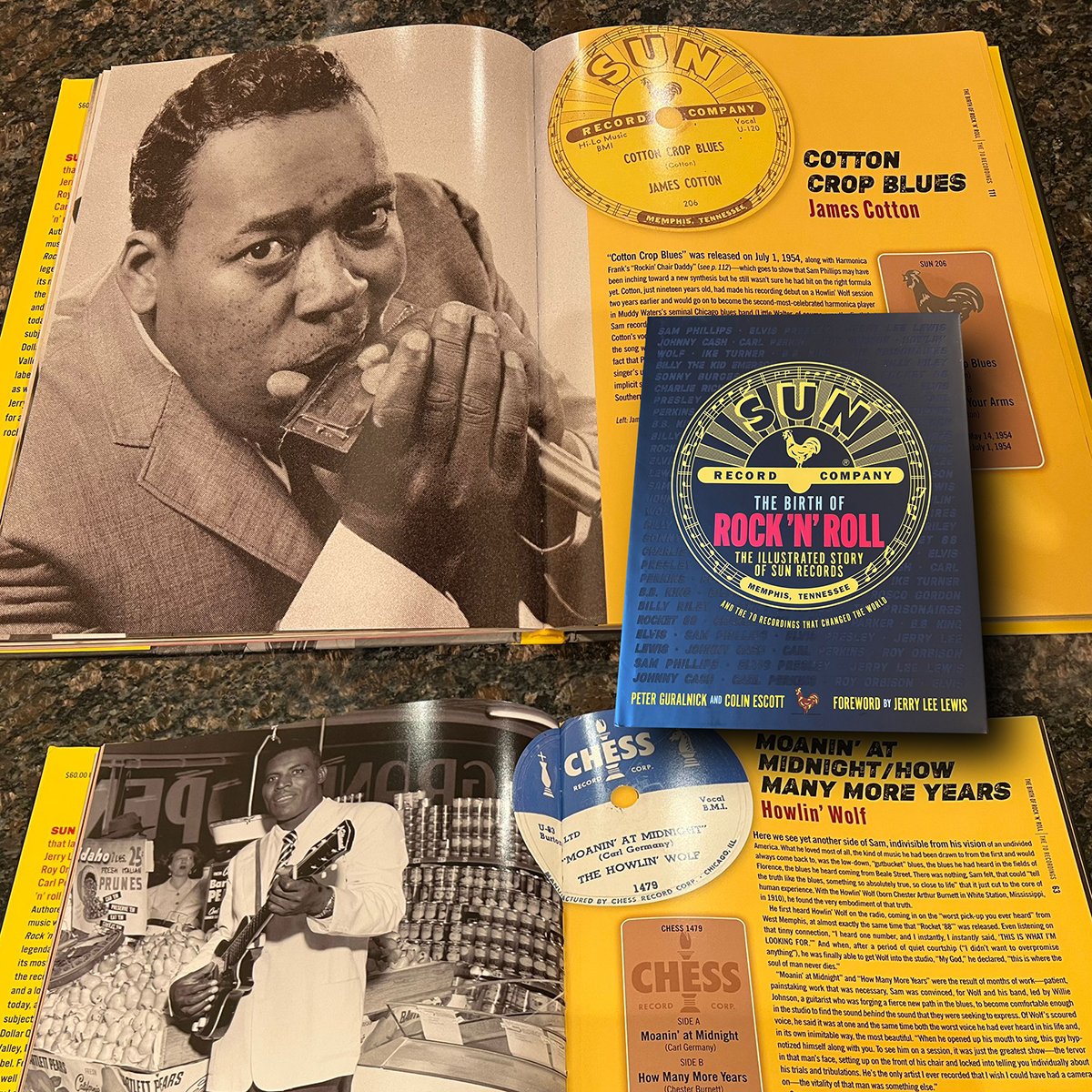THE BIRTH OF ROCK ‘N’ ROLL: THE ILLUSTRATED STORY OF SUN RECORDS & THE 70 RECORDINGS THAT CHANGED THE WORLD
by Peter Guralnick and Colin Escott.
Sun Records have marked its 70th Anniversary with the publication of this significant book that details the history of the iconic record label, both in written and pictorial format. The label’s anniversary is also recognised by listing seventy recordings by both well-known and prominent artists, alongside some lesser-hailed men and women, who recorded their music at the Memphis studio.
Fittingly, the book was written by two celebrated journalists. Peter Guralnick is the author of SAM PHILLIPS: THE MAN WHO INVENTED ROCK ’n’ ROLL and also the comprehensive two-volume biography of Elvis Presley, LAST TRAIN TO MEMPHIS and CARELESS LOVE. Colin Escott wrote CATALYST: THE SUN RECORDS STORY in 1974 and has written about the label extensively over the years. Forwarded by the late Jerry Lee Lewis and featuring numerous rare images, the book is not only an in-depth history of Sun Records but also a chronicle of the birth and emergence of rock and roll.
Born on a farm in Alabama in 1923, Sam Phillips relocated to Memphis, Tennessee, in 1945, where he became a radio engineer and presenter on the radio station WREC. Enthralled by the vibrant music scene in that city, Phillips, ignoring the advice of his employers at WREC and following the demise of Royal Record Studio, developed the Memphis Recording Studio in 1950 at 706 Union Avenue, Memphis.
The emergence of Sun Studios, and the many musical and commercial gambles taken by Phillips, resulted in the studio becoming the spearhead and forefront of rock and roll, pop, blues, gospel and rock music both in the U.S.A and worldwide for decades. Despite the traumatic early days of Sun, their cash flow difficulties and its effect on Philips’ mental health, the label limped on. The jewel in the crown came to light on Monday, July 5th 1954, when a young Elvis Presley entered the studio to record a country love ballad. Passing the time during the recording break, Presley blasted out a blues song, That’s All Right. Liking what he heard, Phillips recorded the song and within a short period of time, Presley was to be head hunted by RCA who paid Phillips the princely sum of $35,000, which allowed Sun to remain in business. The label’s history has been documented in many other publications and Guralnick and Escott’s account of that history amounts to less than a fifth of the book. The remaining pages are dedicated to seventy recordings on the label, with each one allocated an individual chapter. Rather than featuring the seventy best sellers for the label, though many are included, the authors drill down on Phillips’ faith and conviction of artists and music styles that other labels would not touch. His tinkering with B.B. King’s sound transported from him what Phillips considered as ‘polite blues’ to one of the most influential blues guitarists of his time. Despite the commercial limitations of blues music and in particular female blues artists, Sun continued to support the genre and recorded female artists like Big Memphis Ma Rainey. Household names such as Johnny Cash, Charlie Rich, Roy Orbison, Jerry Lee Lewis and Carl Perkins all feature alongside often forgotten artists like Frank Frost and The Night Hawks and Warren Smith. Also included is a complete discography of all singles recorded on the Sun label from Jackie Boy and Little Walker’s Blues in My Condition from 1952 to Johnny Cash’s So Doggone Lonesome in 1960 and LPs from Johnny Cash’s With His Hot and Blue Guitar from 1957 to the final LP released on the label, Original Sun Sound of Johnny Cash in 1964.
Meticulously researched and featuring many rare images, this is a ‘must-have’ for both the music historian and any music lover that wants to trace the rise in popular music.
Review by Declan Culliton

